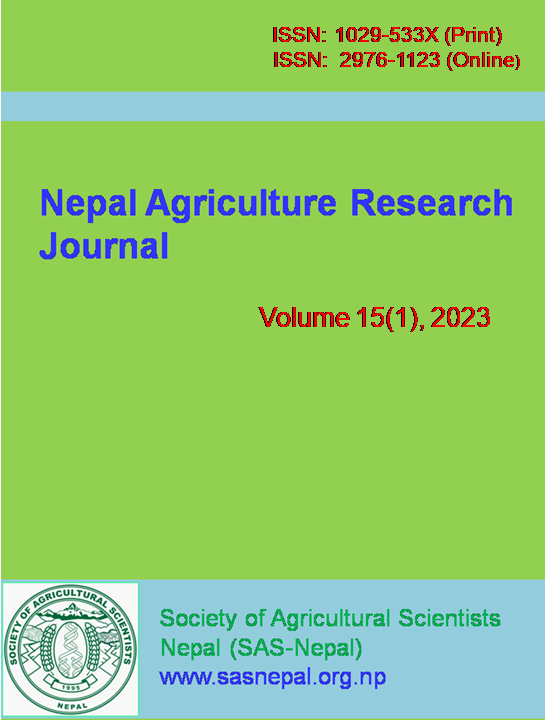Does mastitis cause economic loss in dairy cattle in Nepal?
DOI:
https://doi.org/10.3126/narj.v15i1.51064Keywords:
Mastitis, economic loss, infertility, technology adoptionAbstract
Mastitis is an economically important disease of dairy cattle worldwide. To assess its economic impact, a study was conducted in 384 households from eight districts namely Jhapa, Morang, Sunsari, Sarlahi, Chitwan, Rupandehi, Makawanpur and Kavre of Nepal having major dairy pockets, higher number of cattle population and higher number artificial insemination records. A semi-structured questionnaire was designed, pretested and asked with the respondents having dairy cattle. A focus group discussion was made with the members of dairy cooperatives, service providers from the government and private sectors including veterinarians, paraprofessionals and development workers. The key informant’s interview was performed with livestock experts from veterinary laboratories, veterinarians from Department of Livestock Services (DLS) and Nepal Agricultural Research Council (NARC) to identify and triangulate the economic loss caused by clinical and subclinical mastitis. The survey results showed that an estimated loss of 8320 million Nepalese rupees (around 64 million USD) for sub-clinical mastitis and 4430 million rupees (around 34 million USD) for clinical mastitis. Dairy cattle suffering from mastitis also showed the higher incidence of infertility. The probability of infertility in mastitis affected cattle is 11% higher as compared non affected cattle. It is recommended to initiate the effective mastitis control program immediately which also helps to reduce the incidence of infertility in dairy cattle.
Downloads
Downloads
Published
How to Cite
Issue
Section
License
Copyright (c) 2023 Kharel et al.

This work is licensed under a Creative Commons Attribution-NonCommercial-NoDerivatives 4.0 International License.
This license allows reusers to copy and distribute the material in any medium or format in unadapted form only, for noncommercial purposes only, and only so long as attribution is given to the creator.




